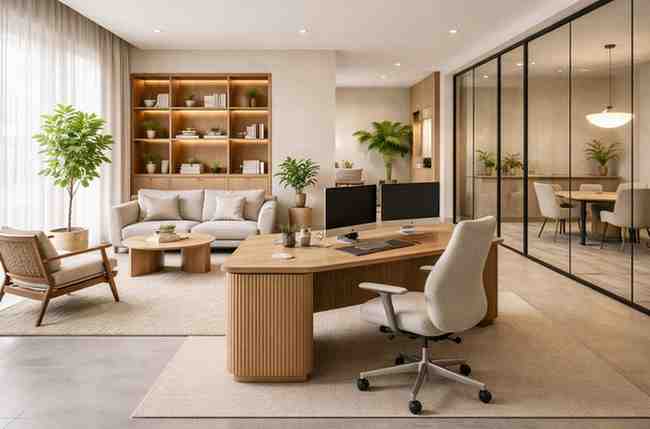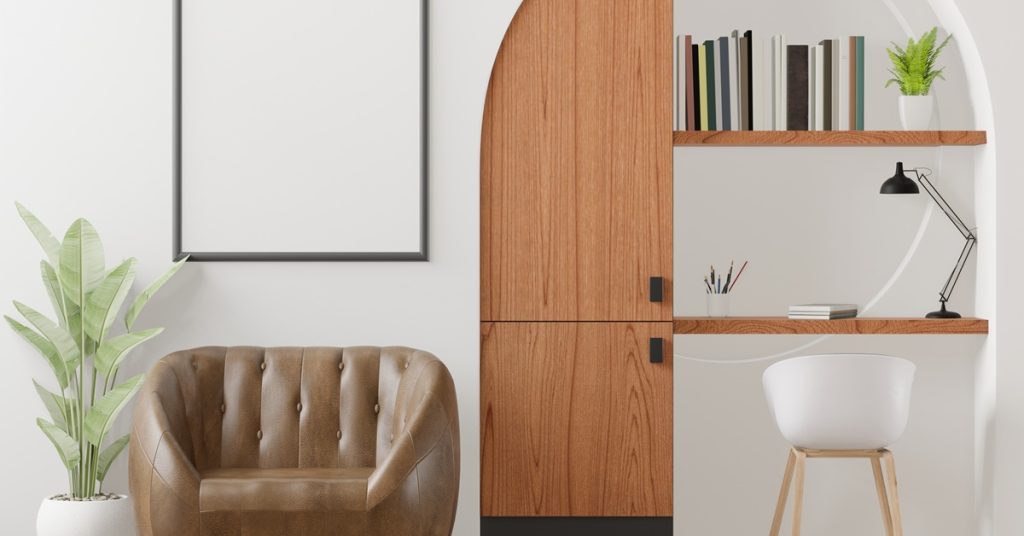Introduction
When it comes to home construction or renovation, selecting the right materials is crucial for achieving the desired aesthetics, durability, and functionality. Engineered wood and plywood are two popular choices, each with its unique advantages and applications. In this blog, we’ll delve into the differences between engineered wood and plywood, helping you make an informed decision for your home projects.
What is Engineered Wood?
Engineered wood, also known as composite wood or man-made wood, is manufactured by binding wood fibres, strands, or veneers with adhesives under heat and pressure. This process creates a product that can be tailored for specific uses and performance characteristics. Common types of engineered wood include medium-density fiberboard (MDF), particleboard, oriented strand board (OSB), and laminated veneer lumber (LVL).
What is Plywood?
Plywood is a type of engineered wood made by glueing together thin layers, or plies, of wood veneer. These layers are stacked with their grains at right angles to each other, enhancing the strength and stability of the finished product. Plywood is available in various grades and thicknesses, making it versatile for different applications.
Know more about how engineered wood and plywood compare for your next home project.
Key Differences Between Engineered Wood and Plywood
Construction and Composition
- Engineered Wood: Made from wood fibres, strands, or particles bonded with adhesives. It is often constructed to meet specific performance criteria.
- Plywood: Composed of multiple layers of wood veneer glued together with the grain of each layer perpendicular to the previous one, which improves strength and reduces expansion and shrinkage.
Strength and Durability
- Engineered Wood: Generally strong and stable, but its strength can vary depending on the type. LVL and OSB are particularly strong and often used in structural applications.
- Plywood: Known for its high strength and durability, especially when using higher grades with quality veneers and adhesives. It performs well under both compressive and tensile stresses.
Moisture Resistance
- Engineered Wood: Some types, like OSB and treated MDF, offer good moisture resistance, but particleboard can swell and deteriorate when exposed to moisture.
- Plywood: Marine plywood and exterior-grade plywood are specifically designed to resist moisture, making them ideal for outdoor and high-humidity areas.
Aesthetics and Finish
- Engineered Wood: Often comes with a smooth, uniform finish that can be easily painted or laminated. MDF, for example, is excellent for creating intricate designs and smooth surfaces.
- Plywood: Offers a natural wood grain finish that can be stained or varnished to enhance its appearance. Higher-grade plywood is often used where a natural wood look is desired.
Cost
- Engineered Wood: Generally less expensive than plywood, making it a budget-friendly option for many projects. However, high-performance engineered wood products like LVL can be more costly.
- Plywood: Typically more expensive than standard engineered wood products, especially in higher grades and thicker sheets.
Applications in Home Projects
Flooring
- Engineered Wood: Engineered hardwood flooring offers the appearance of solid wood with added stability, making it less susceptible to changes in humidity and temperature.
- Plywood: Often used as a subfloor material due to its strength and stability, providing a solid base for various types of finished flooring.
Cabinetry and Furniture
- Engineered Wood: MDF and particleboard are commonly used for cabinets and furniture due to their smooth finish and ease of machining.
- Plywood: Preferred for high-quality cabinets and furniture that showcase natural wood grain. It offers superior strength and durability.
Wall Sheathing and Roofing
- Engineered Wood: OSB is widely used for wall sheathing and roofing due to its strength, moisture resistance, and cost-effectiveness.
- Plywood: Provides excellent structural support and moisture resistance, especially in exterior-grade options, making it suitable for wall and roof sheathing.
Doors and Trim
- Engineered Wood: MDF is ideal for interior doors and trim because of its smooth surface, which is perfect for painting and creating intricate designs.
- Plywood: Often used for solid-core doors and trim where the natural wood finish is desired.
Making the Right Choice
When deciding between engineered wood and plywood, consider the specific requirements of your project:
- Budget: Engineered wood is generally more affordable, but plywood may offer better value in applications requiring high strength and durability.
- Environmental Conditions: For areas with high moisture, opt for marine or exterior-grade plywood or moisture-resistant engineered wood.
- Aesthetics: Choose plywood for a natural wood finish and engineered wood for a smooth, paintable surface.
- Structural Needs: For structural applications, consider the specific strengths of products like LVL (engineered wood) or higher-grade plywood.
Upgrade your interiors with high-quality plywood for lasting performance.
Conclusion
Both engineered wood and plywood offer distinct advantages that make them suitable for different home projects. By understanding their properties, strengths, and best uses, you can make an informed decision that aligns with your budget, aesthetic preferences, and performance requirements. Whether you’re renovating a kitchen, building furniture, or constructing an addition to your home, selecting the right material will ensure your project is both beautiful and durable.
Build your dream spaces with Wigwam Ply, crafted for strength, precision, and lasting beauty.
Choose the plywood trusted by professionals for projects that stand the test of time.
FAQS
- Which is stronger, engineered wood or plywood?
Plywood generally offers higher strength and durability, especially in higher grades, due to its cross-grain construction. However, certain engineered wood products like LVL can match or exceed plywood’s strength in specific structural applications. - Is engineered wood more affordable than plywood?
Yes, most engineered wood products, such as MDF and particleboard, are typically less expensive than plywood, making them a budget-friendly choice. However, high-performance engineered wood types like LVL can be more costly than standard plywood. - Which material is better for areas with high moisture?
For high-moisture environments like bathrooms or outdoor projects, marine plywood or exterior-grade plywood is the better choice. Some moisture-resistant engineered woods, like treated MDF or OSB, can also be suitable depending on the application. - Can engineered wood look like real wood?
Yes, engineered wood can be finished with veneers or laminates that mimic the appearance of natural wood. However, if you want authentic wood grain and texture, plywood, especially higher-grade options, is the better choice. - Which is easier to work with for furniture and cabinetry?
MDF (a type of engineered wood) is easier to machine, cut, and paint, making it great for intricate designs. Plywood, on the other hand, offers strength and a natural wood finish, which is ideal for high-quality, long-lasting furniture.

